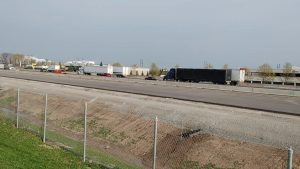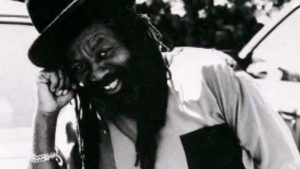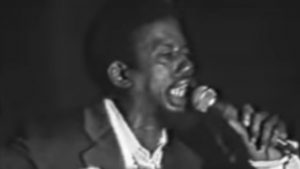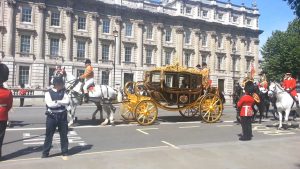
Mourners and family members arrive at the morgue in red and black to serenade the body home for funeral preparations. Those who can afford to usually rent a flat bed truck to transport the body; others who cannot afford the expense use public transportation.
In villages, the frozen body is strapped unto the roof of a passenger vehicle just as is done with bags of maize or live stock. As the vehicle carrying the body leaves the morgue for home the mourners on board sing joyously with the full capacity of their lungs to the accompaniment of drumming and other instruments while also attempting dance moves from their cramped seated or standing positions.
On the way, close to the final destination of the body, a group of singers again, dressed primarily in black and red, walk towards the slowly approaching vehicle to also escort the body home. When the vehicle arrives close to home those on board descend to join their escorts. The drummers intensify their rhythm while everyone present breaks out in dance and amplify their singing and clapping. The jubilant procession follows the vehicle to the house where the body will be prepared for viewing.
As the body is being prepared, mourners celebrate at the wake with drumming, singing, dancing and an abundance of the potent local brew known as akpeteshi among Ewes. The wake goes into early Saturday morning and can end as late as 9 a.m.
By Saturday afternoon it seems the entire female community descends on the deceased family’s home to cook the food that will be served after the burial later that day. Prior to the funeral firewood and water would have been brought to the deceased’s house for the cooking with pomp and pageant.
Late Tuesday or Wednesday, a procession of finely dressed firewood and water carriers, typically women, walk the streets of villages in a line singhing with neatly stacked bundles of wood dexterously balanced on their heads.
The community comes together to perform these tasks in appreciation of the fact that the deceased’s family is too bereaved to do so themselves.
One late Friday afternoon, while on my way home from town I witnessed a body being slowly transported to a neighbouring village. Escorting the vehicle carrying the body was a procession of motorcycle riders while other motorcyclists rode up and down beside the truck doing life threatening stunts.
On that occasion the approximately 50 accompanying motorcyclists were demonstrating that the dead man was also a motorcycle-taxi driver. In the case of a prosperous farmer it would not be surprising to see young mourners escort the body home with cutlasses, hoes and other farming implements. This new practice goes along with the artistic coffins that are now made to represent one’s former occupation.
It is not uncommon to hire professional weepers, better known among the Asantes as ‘funeral contractors’, to ensure the proper amount of tears are shed for the dead and that it is done with the right amount of flair. No one wants to risk their deceased being thought of as leading an unfit life because mourners did not shed sufficient tears to silence wagging tongues. It should be noted that not all deaths are ‘celebrated’.
If one commits suicide, dies through an accident or an abnormal reason the process leading to such person’s burial is not at all festive. The dead is swiftly buried away from the common cemetery. The grave site will never be weeded nor maintained as is done in the common cemetery. The low key attention to the dead is in hopes of dissuading the deceased’s spirit from returning to the community, which is a bad omen.












